NYC’s Forgotten ‘War on Christmas Trees’
Discover how an obscure holiday crackdown affects festive street vendors today!



The decadent Sherry-Netherland Hotel located in Midtown East is known for its opulent walls and floors; however, its ceiling has been plain white for much of its recent history. This all changed with the uncovering and restoration of the 1927 Beaux-Arts mural. Here are 8 other murals around NYC that have been either uncovered or face preservation controversy.

In 1934, John D. Rockefeller commissioned the artist Diego Rivera to paint a mural in the lobby of Rockefeller Center with the theme of “Man at the Crossroads Looking with Hope and High Vision to the Choosing of a New and Better Future.” Rivera was to construct a mural of “workers facing symbolic crossroads of industry, science, socialism, and capitalism,” reports PBS.
The work is centered upon a worker operating machinery with four large orbs sprouting out into the corners. Rivera also depicted Lenin to the right and an image of May Day. Rockefeller, not wanting an image of the Communist leader, destroyed the mural before completion. However, Rivera was able to recreate the work in Mexico City.

One of Shahn’s murals in the Bronx General Post Office
In 1938, the United States Postal Service commissioned Ben Shahn and his wife–a part of a New Deal program that employed artists nationwide to produce large scale works of art in public buildings–to complete a mural in the main Bronx branch. Continuing upon the theme of worker’s prowess and inspired by Walt Whitman, Shahn crafted a mural entitled Resources of America depicting the American worker.
In 2013 the postal service stated that they would sell off the building, as has been done with several others nationwide. However, at the end of 2013 the interior of the post office was awarded landmark status and the building, along with its mural, was saved. The General Post Office was included in our list of 8 Architectural Gems along the Bronx’s Grand Concourse.
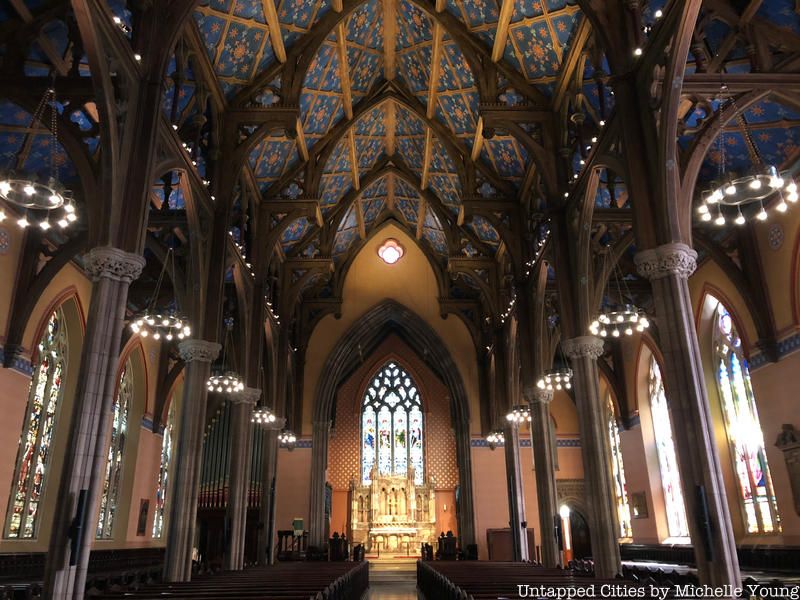
A vivid blue sky dotted with golden stars adorns the ceiling of Grace Church in Brooklyn Heights, and had since the church’s inception in 1866. However, at the turn of the century, a fake wood pattern–”faux bois”– was painted atop the celestial mural. The mural was finally recovered after investigation by historic preservationists in December of 2013, enchanting the church once again. The church was designed by English architect Richard Upjohn in 1866 and held its first service in 1848.

A heated preservation battle went down last year for the Picasso tapestry, entitled “Le Tricorne,” located in the Four Seasons Restaurant. Though the restaurant gained landmark status in 1989, the tapestry did not. The owners of the building want to remove the tapestry, but preservationists argued that doing so would have made it “crack like a potato chip.” Fortunately, it was finally moved and is on display at the New York Historical Society until summer 2016.
The tapestry was originally crafted by Picasso in 1919 and depicts a scene from the ballet El sombrero de tres picos. The tapestry is actually a portion of the curtain and was then sold to finance further productions. Read more about the preservation battle and see photos from inside the classic Four Seasons.
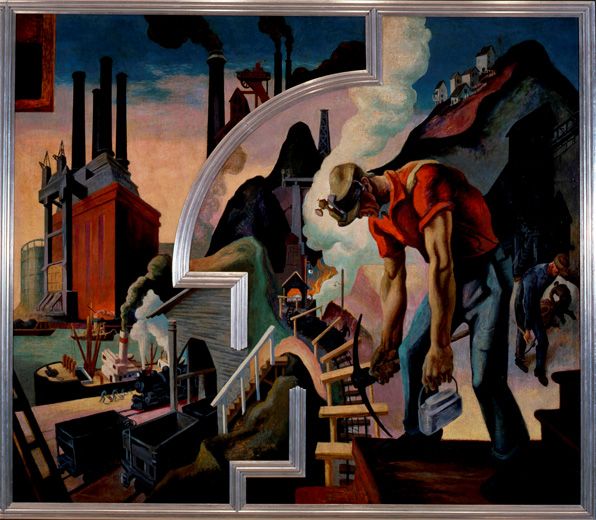
Thomas Hart Benton’s America Today (photo via Metropolitan Museum of Art)
This 10-panel mural was crafted in 1931 by the painter Thomas Hart Benton for a boardroom in the newest building of the New School for Social Research. Designed by Joseph Urban, the structure was crafted 1930 in the international style. The work depicts pre-depression era characters, including all aspects of society from boxers to workers. In 1982, when the New School was short on funds, the work was sold to the AXA Group and adorned the company’s lobby until several years ago. The work was eventually put into storage until it was acquired by the Metropolitan Museum of Art later that year, in 2012.
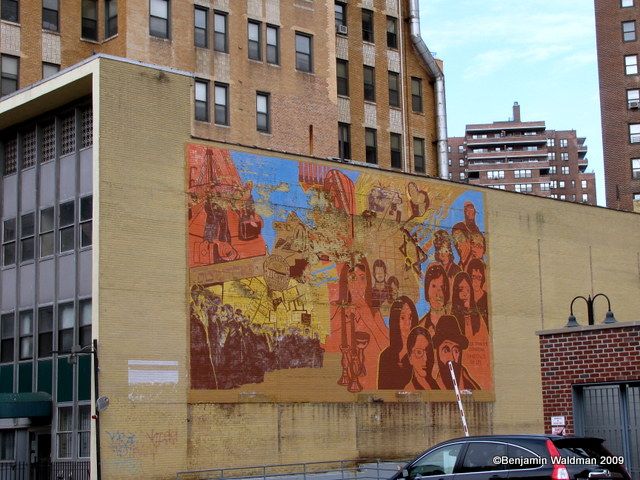
The mural constructed on the Lower East Side commemorating Jewish heritage in the area
This mural depicting the International Ladies Garment Workers’ Union was painted in the 1970s. The mural is located on East Broadway on the Lower East Side and was done as part of a beautification process for the area. It has indeed stood the test of time, however, debates abound over the demolition of the building, and with it the mural.
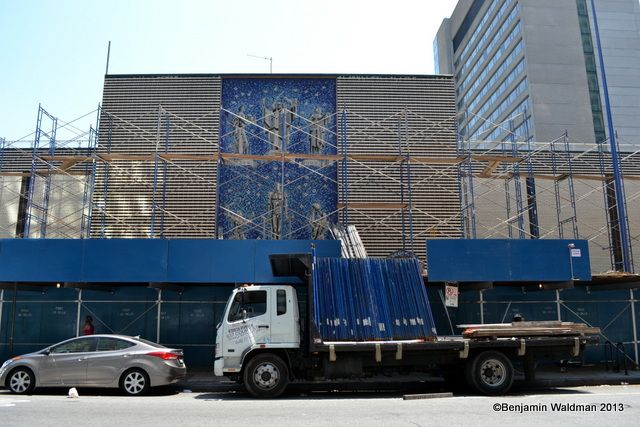
The mural by Nathaniel Choate that was at City Tech in Brooklyn
New York City College of Technology, known as City Tech, is a university that was located at 285 Jay Street, Brooklyn. The original structure, entitled the Klitgord Center, was demolished over the summer and construction on a new space has been under way. A mural adorning the front of the Klitgord Center by the painter and sculptor Nathaniel Choate was destroyed along with the building. The mural was painted in 1962 and portrays six figures representing different activities occurring at the school. Though crests on either side of the mural were saved, but the work was destroyed with the building.
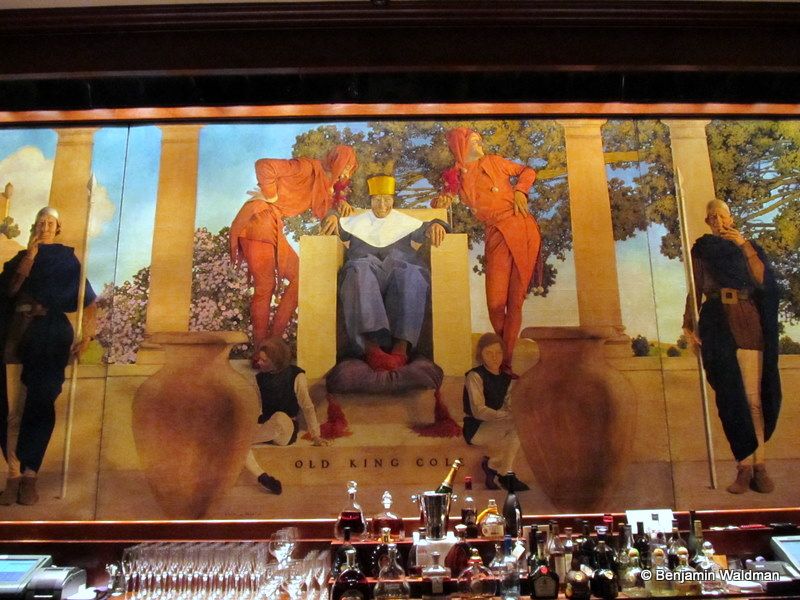
John Jacob Astor had the now famed Knickerbocker Hotel built in 1906, and, as a part of its opening, commissioned Maxfield Parish to paint a large work for the interior. The work was to represent King Cole, from the British nursery rhyme. Parish and Astor got into a heated argument and the figure of King Cole is supposed to be very much representative of Astor. It is said that the figure has farted and those around him are attempting not to laugh. The Knickerbocker Hotel closed and in the 1930s the mural wound up in the King Cole Bar in the St. Regis Hotel. We included the bar on our list of places where a drink is served with a work of art.

The American artist James Brooks was commissioned to produce a WPA mural of the history of flight for LaGuardia Airport—a mural that would become the largest of the program. In the 1950s, it was misinterpreted as Communist Propaganda and was painted over. It was later restored in the 1980s. The work is located in the oldest still active terminal in the U.S., the Marine Air Terminal.
Get in touch with the author @spencercnyc
Subscribe to our newsletter